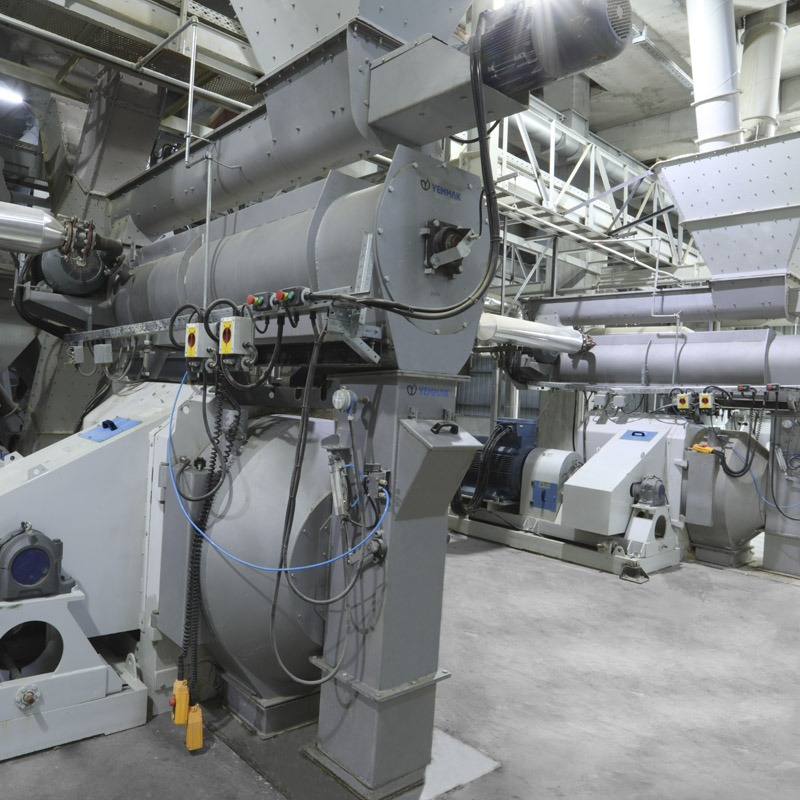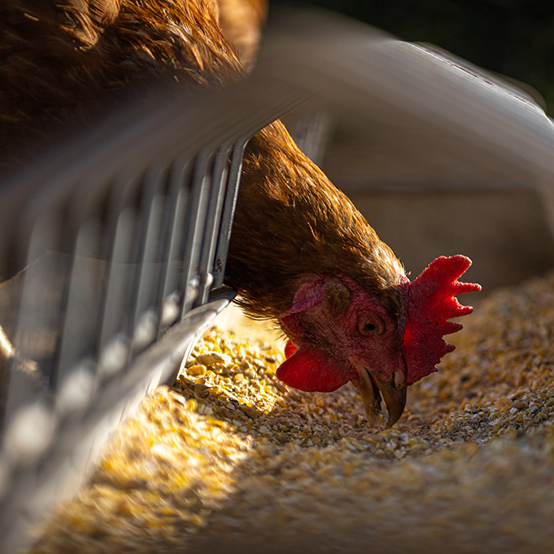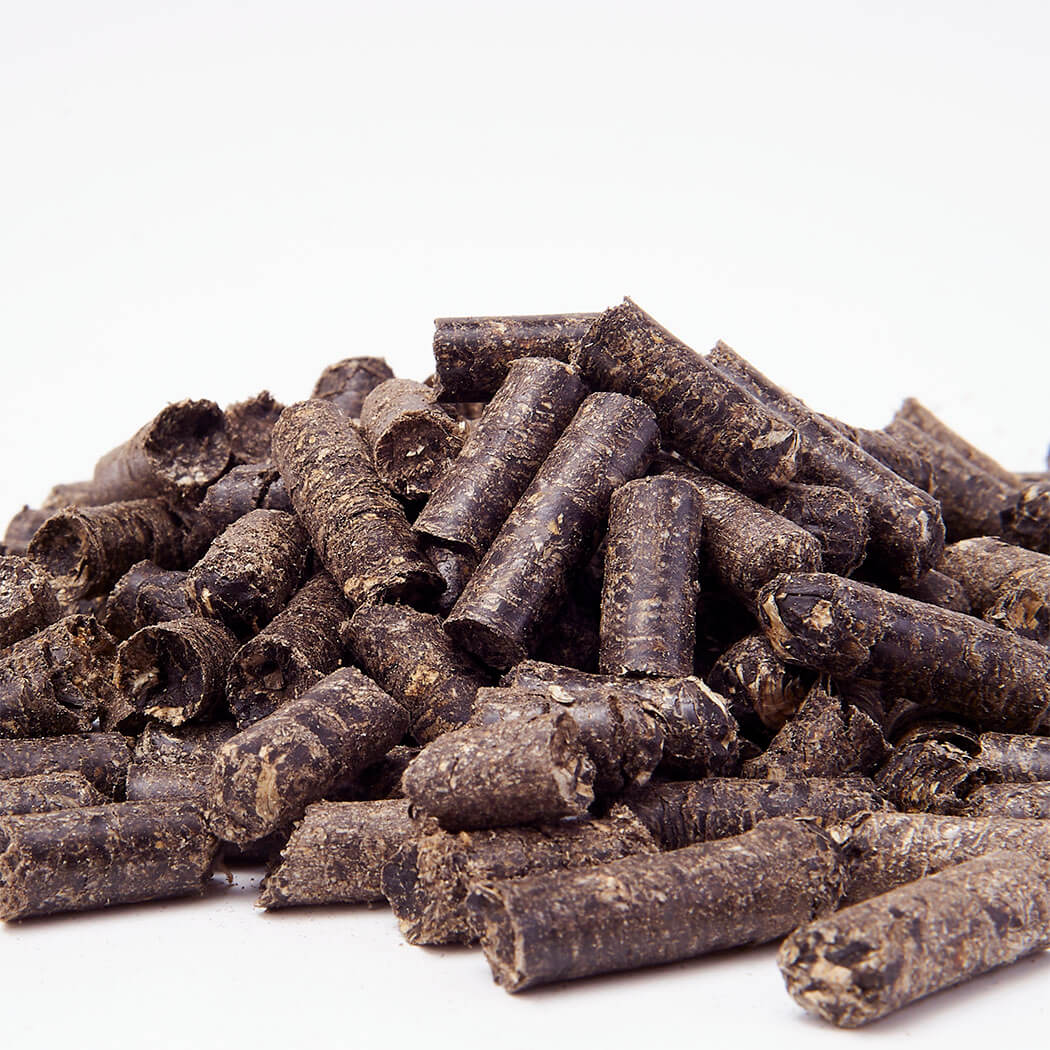

Robust and durable.
P and PM series pellet mills can work both in small and massive facilities in optimal capacity regarding your needs. The semi produce is forwarded to the conditioner unit via the produce feeding spring. The feed is distributed evenly between rolls and discs and is compressed. Adjustable blades can be used to determine the desired pellet height.It’s helpful for stocking and transportation of the feed. It also makes the produce easily digestable while preventing dissolution. It’s efficient and the amount squandered is really in small quantities. It’s more efficient than powdered feed at making use of the energy per unit volume.
Yemmak manufactures pellet mill models that offer the possibility of pelleting animal feed in capacities between 3 - 30 tons / h.
With pellet mill models with a die diameter from 304 mm to 900 mm and motor power ranging from 45 kW to 400 kW, the most suitable size can be offered to the need.
Pellet mills offer the possibility of pelleting between 1.8 - 16mm pellet diameters.
Steam cooked feed becomes easier to digest thanks to the starch going gelatinized. It kills the sickness inducing, harmful bacteria (such as Salmonella). The feed becomes denser after getting pelletted and its transportation expenses become cheaper.
"Outside of the feed industry, it’s also used for pelleting pulp (residue), saw dust (wood dust), organic fertilizer, garbage, hops, bagasse and sugar beet residue."

Advantages of pelleting in the feed industry
1- Feed’s digestibility is increased thanks to grinding, heat, pressure and the steam
2- Molasses and the oil enhances the feed’s taste
3- Prevents choosy eating, provides homogenous nutrition intake
4- Prevents illnesses which spread via the feed
5- Dusting is prevented
6- Bug infestation is reduced, microorganism growth rate is lower
7- Losses which are caused by oxidation and sun light at stockpiling is reduced
8- Takes less space in the storage; efficiency of mechanization of transportation and feeding is increased
9- Ensures the addition of liquid additives to the pellet
Conditioner
The paddles on the conditioner shaft are adjustable to ensure the best steaming, resulting in maximum conditioning time. The pellets can be double-coated to fit customer’s needs. The conditioner is made entirely of stainless steel.
Dies and Rollers
Dies and rollers are made in Germany from high-quality steel alloys.
Cover
The mill cover is made entirely of stainless steel. Two pellet-cutting blades are mounted on the frame extension. This allows the cover to be safely opened and closed without changing the blade adjustment.
Automatic Roller Adjustment
With the automatic roller adjustment mechanism, you can adjust the gap between the roller and the die with the help of automation.
The movable shaft connected to the movable front chuck passes through the press from the main shaft to the back of the press and is connected to a hydraulic cylinder. The shaft that gets its drive from this cylinder moves back and forth linearly and moves the movable front mirror. The mirror, one end of which is movable, makes the roller distance adjustment by rotating the roller eccentrics thanks to the special bolt eyes, one end of which is connected to the roller adjustment star. The adjustment value is transferred to the automation thanks to the linear scale connected to the cylinder.


Poultry feed production is becoming more important day by day as the population...
Discover

Yemmak conducts facility layout, machinery design, production, logistics and implementation operations in bran pelleting facilities.
Discover
Beet pulp is a by-product of sugar factories offered for animal consumption.
Discover

Poultry and livestock droppings are mixed in ponds and converted into ...
Discover
Follow Yemmak Quality
on Social Media!
You can trust us because we don’t have to rely on others. We
are offering all manufacturing, assembling, testing and after sales services from
a single source by proven Yemmak quality!
Follow Yemmak and keep up with us on social media to be
informed about our ongoing projects and the latest news!
Be aware of the latest developments with our corporate e-newsletter Yem'max! From current projects we have implemented to industry trends; You can reach all the news from in-house news to the information of our advanced technology machines with one step.
Subscribe